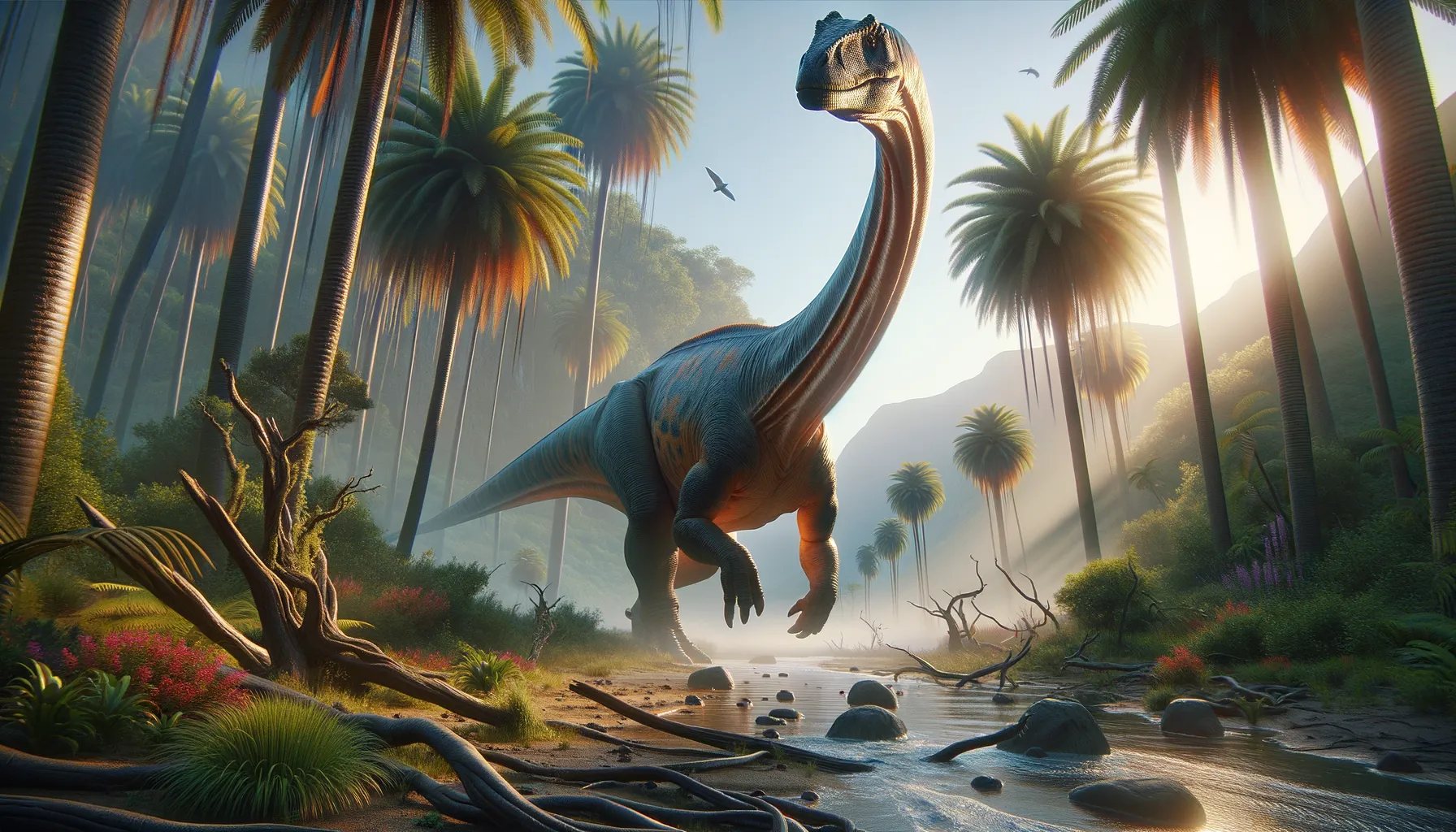
Cathartesaura
Roaming giants of the Cretaceous plains!
Period
Cretaceous
Length
Approximately 50 feet long.
Height
Around 12 feet tall at the hips.
Weight
Likely more than 10 tons.
Cathartesaura was a large, long-necked dinosaur that roamed South America during the Late Cretaceous period. It was part of the sauropod family, known for their massive size and herbivorous diet. Its fossils were first found in Patagonia, providing crucial insights into the diversity of sauropods in this region. The discovery of Cathartesaura has helped paleontologists better understand the ecosystems of ancient South America.
Diet
Cathartesaura was herbivorous, feeding primarily on vegetation like ferns, cycads, and conifers. With its long neck, it could reach high branches or feed on low-lying plants, allowing it to access a varied diet.
Hunting
As an herbivore, Cathartesaura did not hunt for food. Instead, it foraged for various types of vegetation, using its height to reach leaves and branches that were out of reach for smaller herbivores.
Environmental challenges
Cathartesaura faced environmental challenges such as climatic changes and competition for food. Alterations in vegetation patterns due to climate shifts could have strained its habitat. Predators like theropods in its region posed constant threats, demanding vigilance and defensive strategies.
Speed
Slow-moving due to its large size.
Lifespan
Estimated to be several decades.
First discovery
Discovered in Patagonia, Argentina in 2005.
Fun Facts
- Cathartesaura was a type of dinosaur known as a sauropod, which means it had a long neck and tail, with a large body.
- This dinosaur lived in what is now South America during the Late Cretaceous period, about 95 million years ago.
- Cathartesaura was named after the Cathartes, a kind of vulture, because its remains were initially found in a dry, open area reminiscent of vulture habitats.
- The fossils of Cathartesaura were discovered in Argentina, highlighting South America's rich paleontological history.
- Cathartesaura was a herbivore, which means it primarily fed on plants and helped shape its ecosystem by spreading plant seeds.
- Unlike many other sauropods, Cathartesaura is less well-known because only partial remains have been found so far.
Growth and Development
Cathartesaura grew rapidly to achieve its massive size, a common trait among sauropods for survival advantages. Juvenile sauropods likely had different lifestyle and nutritional needs compared to their gigantic adult forms. Their growing phase was crucial to evade predators and establish dominance in their environment.
Habitat
Cathartesaura lived in lush, semi-arid environments that offered ample vegetation. Its habitat was characterized by dense forested areas and open plains, ideal for a large foraging dinosaur. Water sources such as rivers and lakes would have been essential for hydration and supporting rich plant life.
Interaction with other species
Cathartesaura shared its habitat with various other dinosaur species, including predators and fellow herbivores. It likely traveled in groups, which offered protection and social interaction. The presence of large sauropod herds could have affected the distribution of vegetation and shaped the ecosystem.
Natural lifespan
Cathartesaura's natural lifespan could span several decades, typical for large sauropods.
Reproduction
Cathartesaura reproduced by laying eggs, likely in nests that provided security against environmental threats. Females might have laid multiple eggs at a time, increasing the chance of offspring survival. Parental care may have been minimal, with young sauropods quickly adapting to independent life.
Social behaviour
Cathartesaura may have lived in herds, which helped shield individuals from predators and facilitated breeding. Herd behavior could have varied seasonally or be influenced by environmental conditions like food scarcity. Social interactions included communication through vocalizations or physical behaviors.
Fossil locations
Fossils of Cathartesaura have been found primarily in Patagonia, Argentina, providing insights into Cretaceous ecosystems. These discoveries have expanded knowledge about the geographic range and diversity of South American sauropods. The fossil sites are valuable paleontological resources, informing scientists about ancient continental connections.
